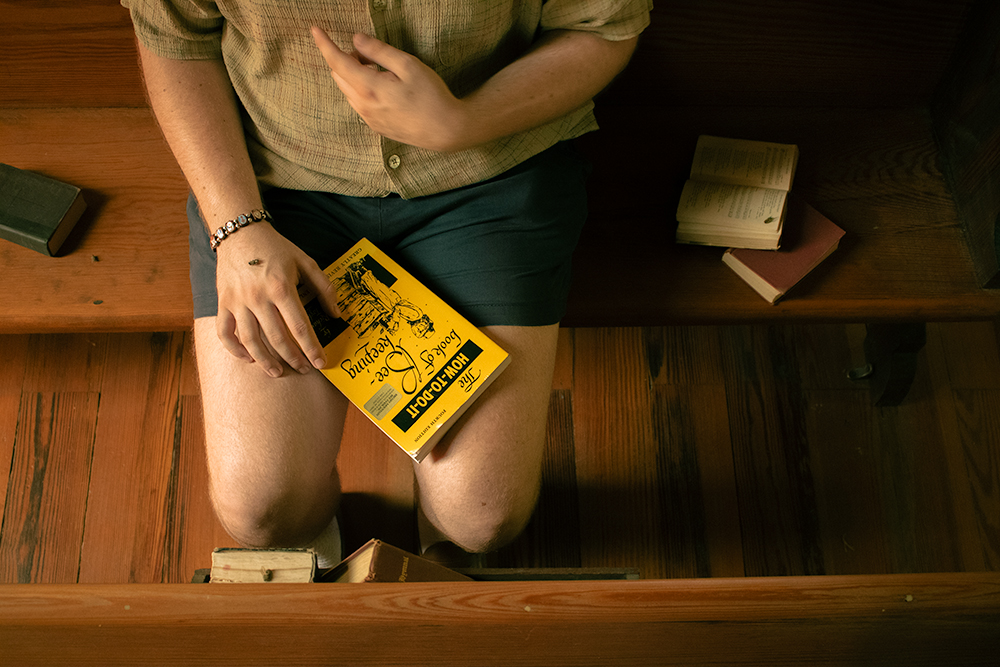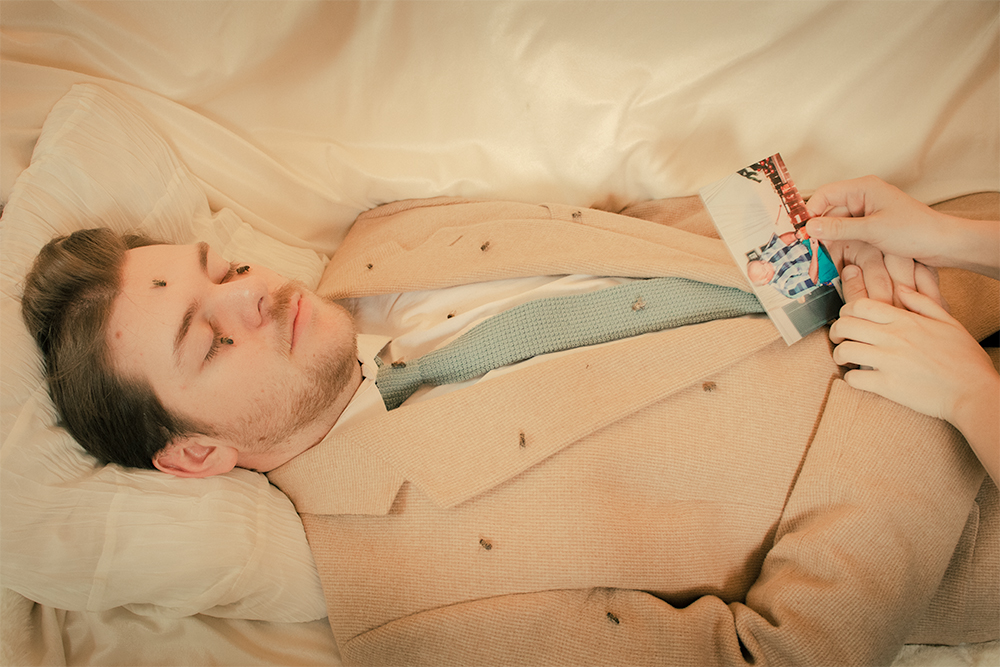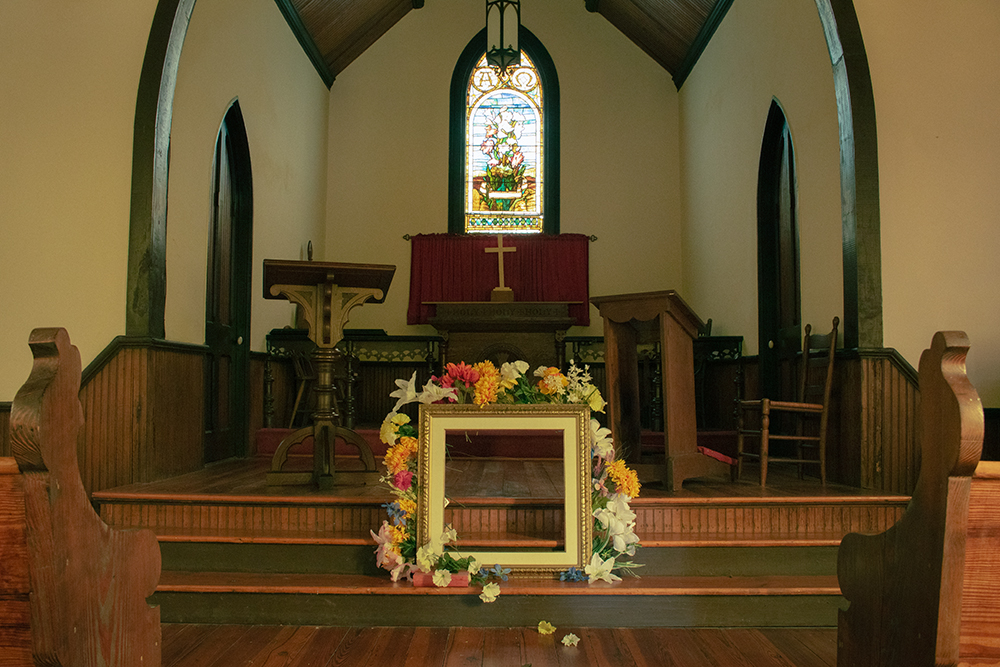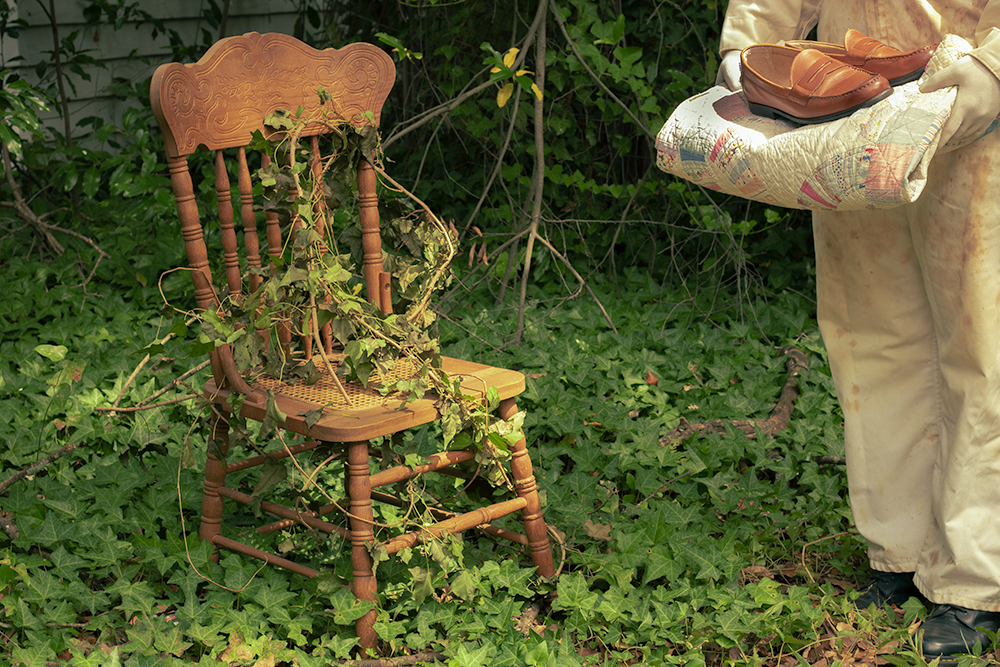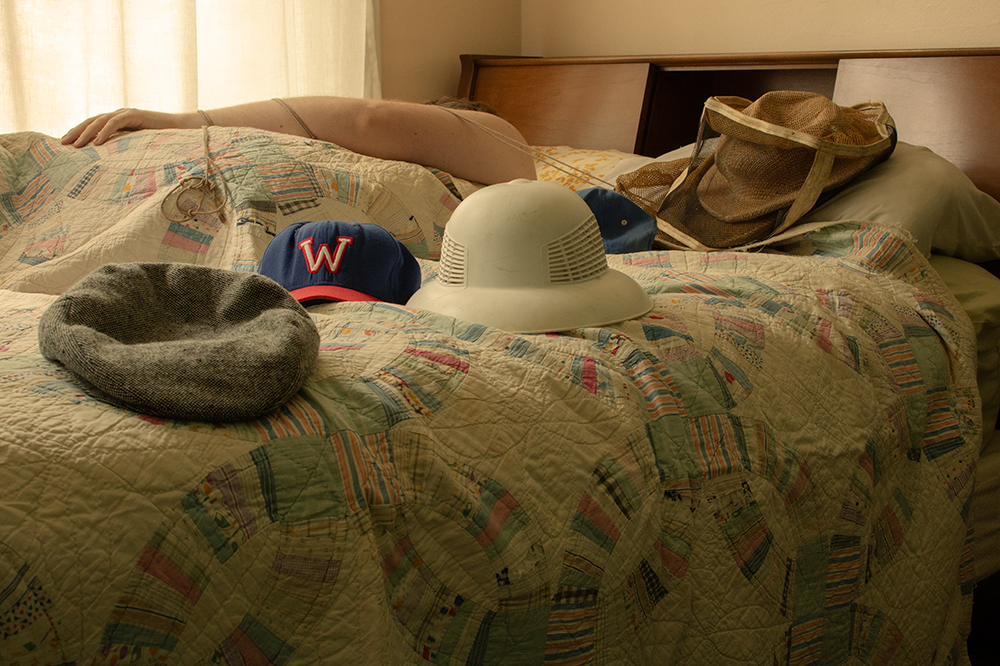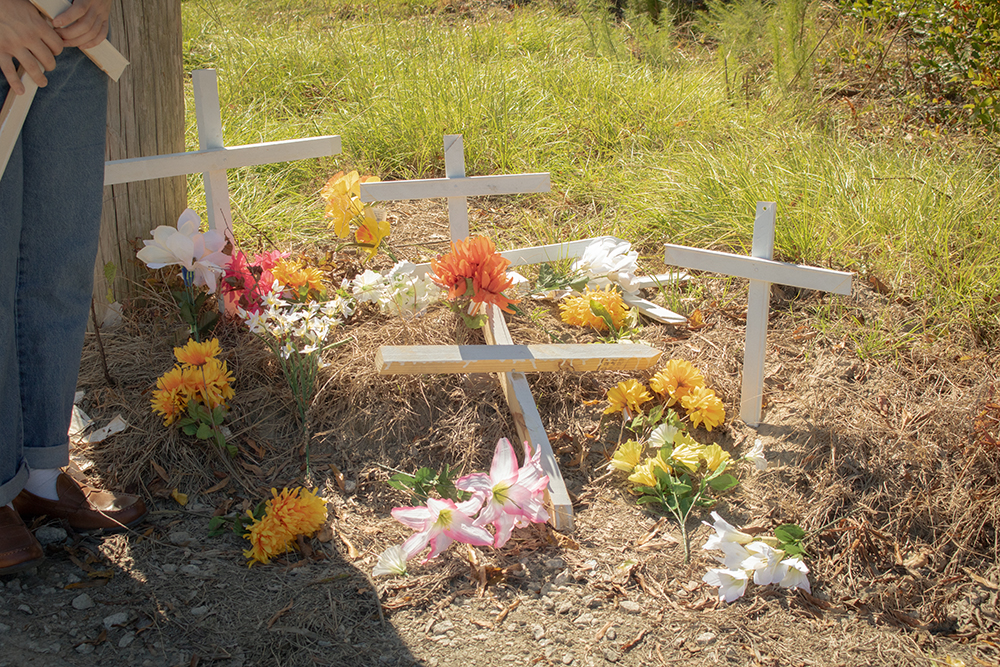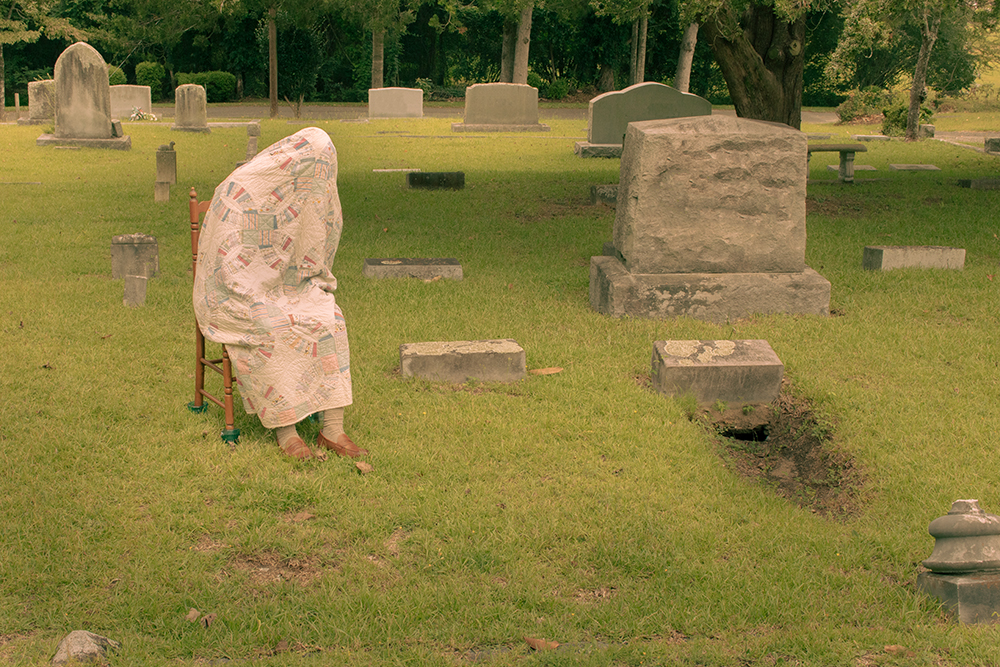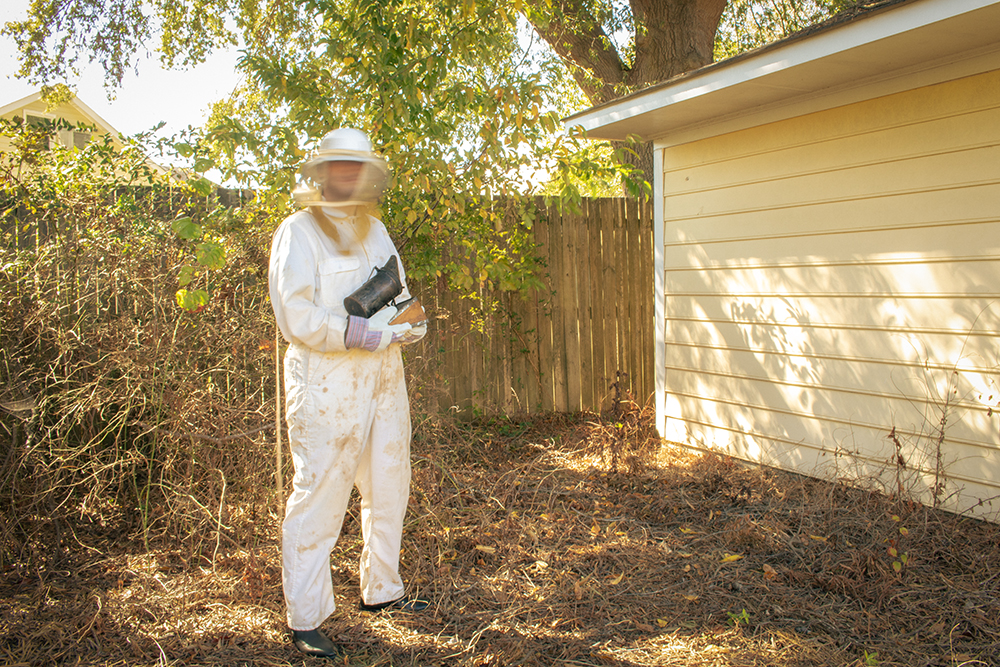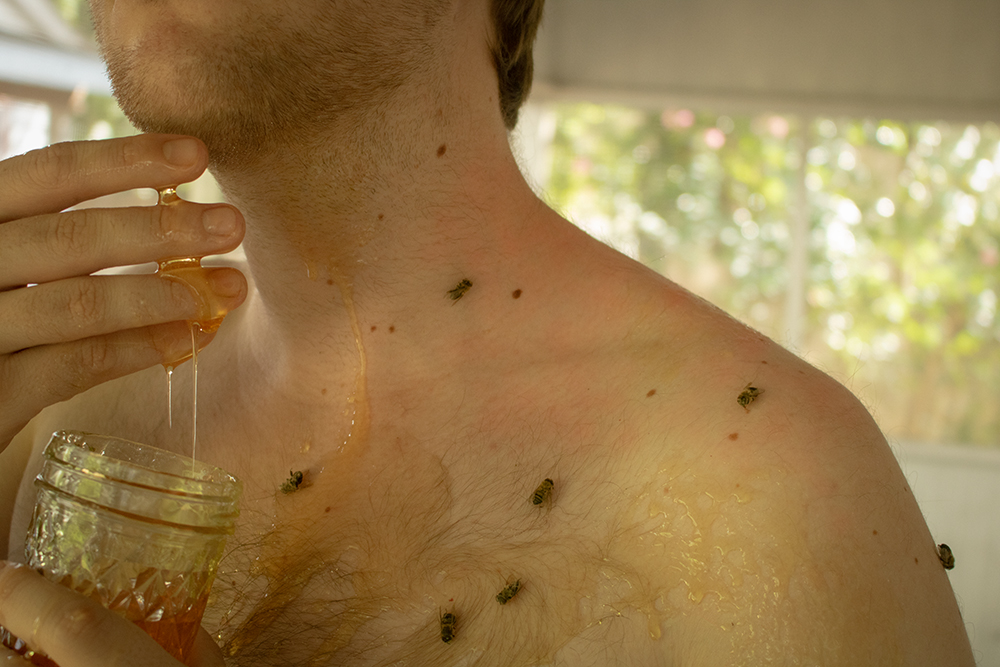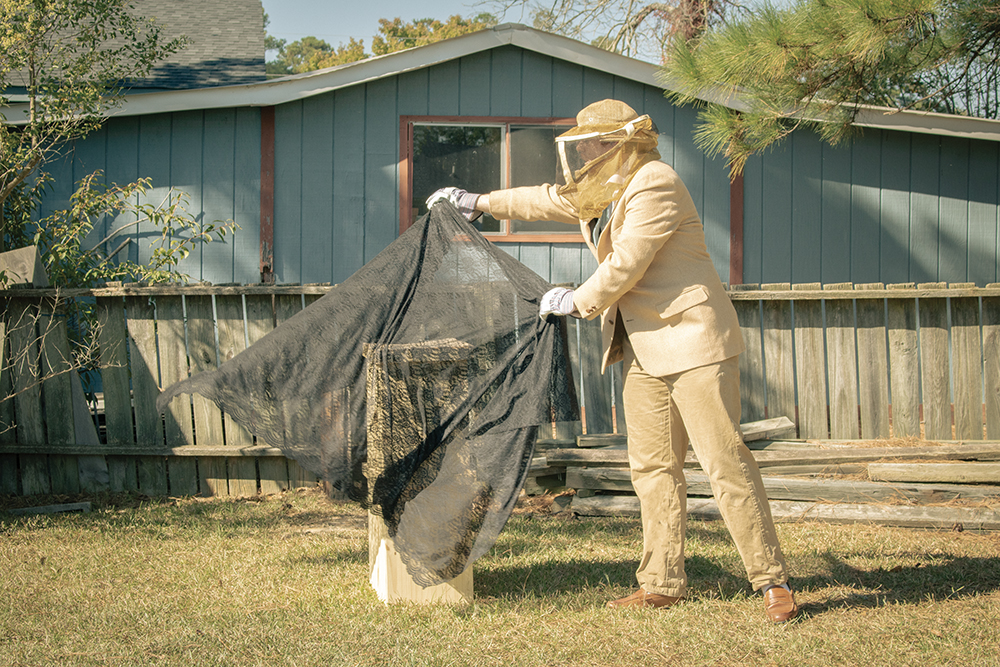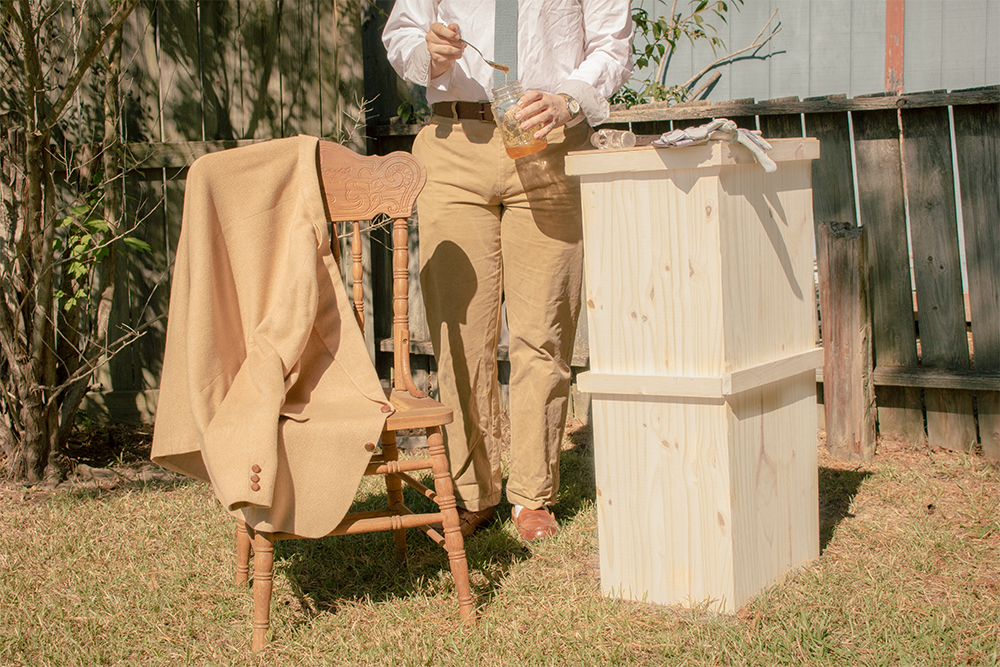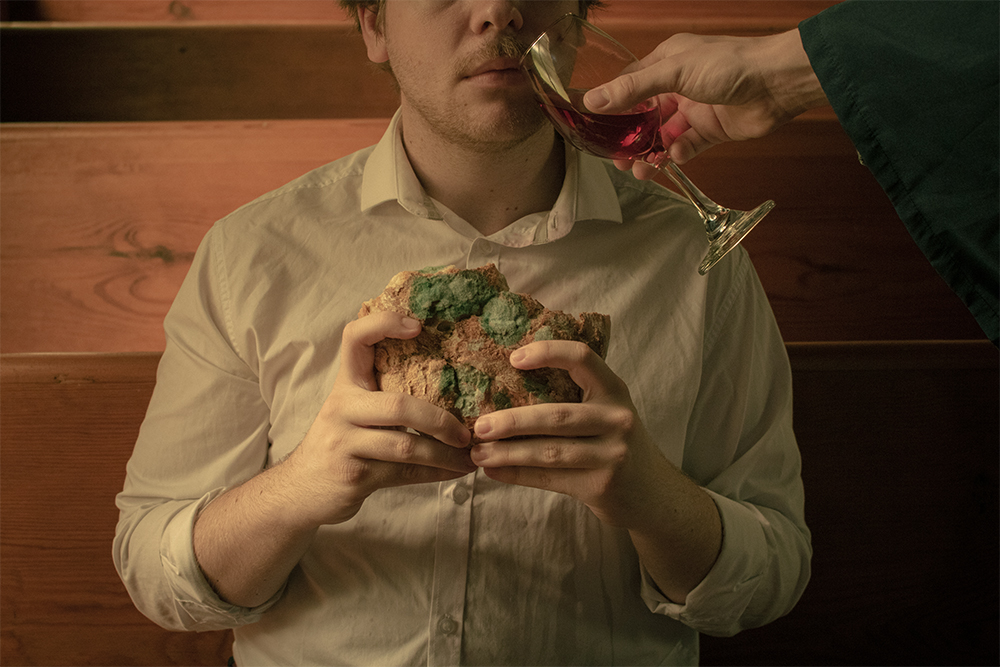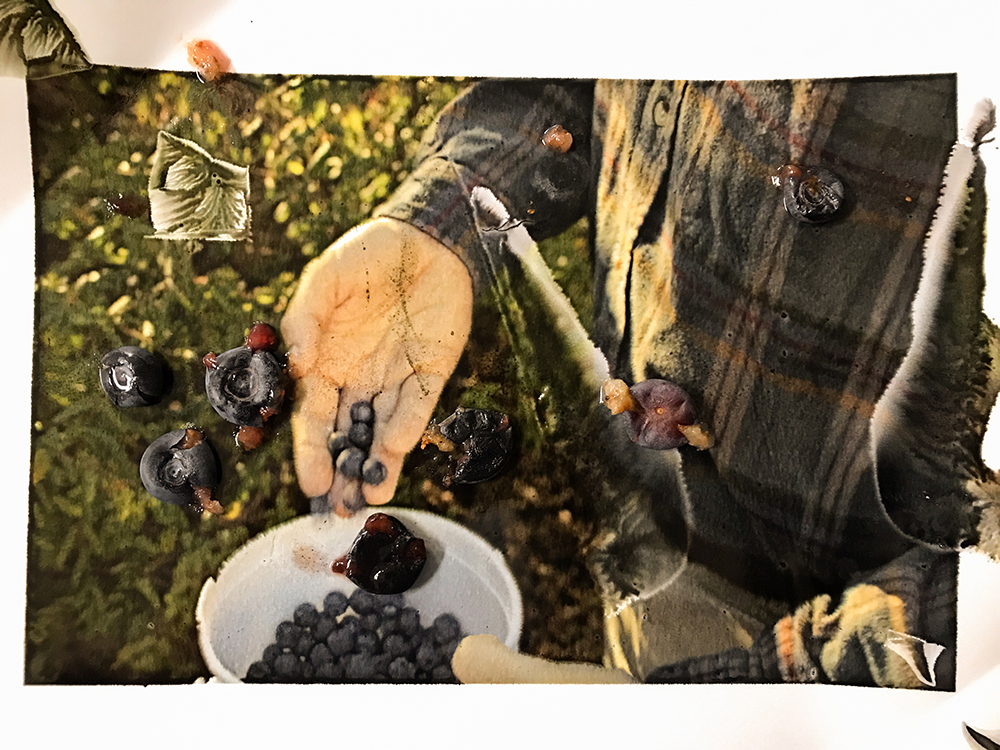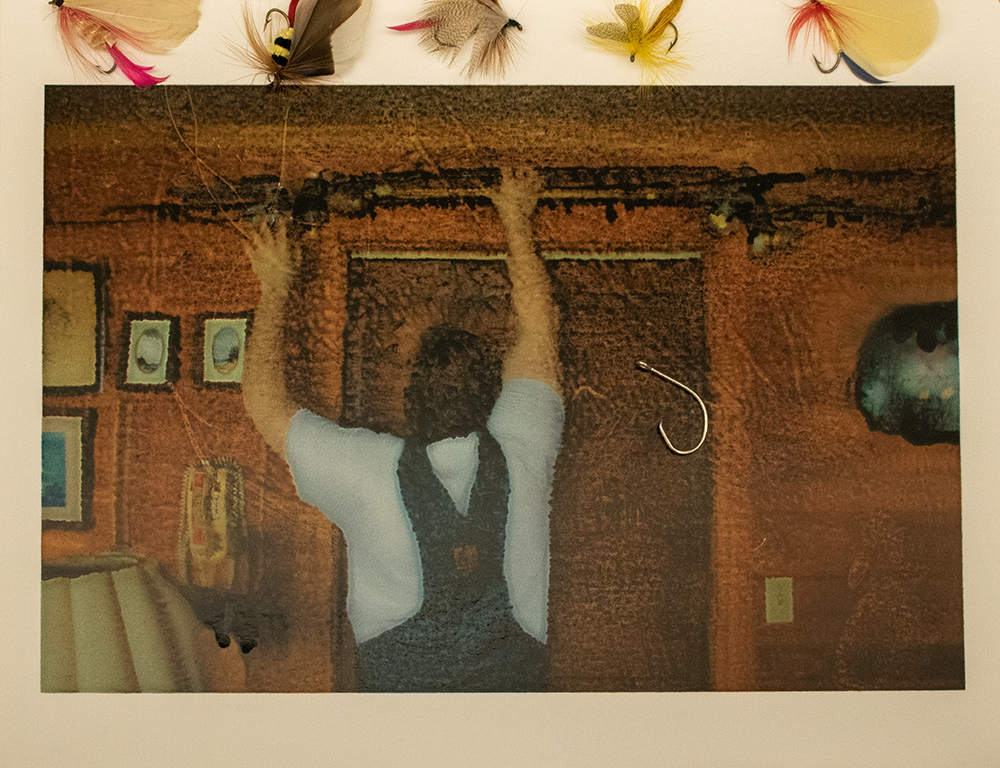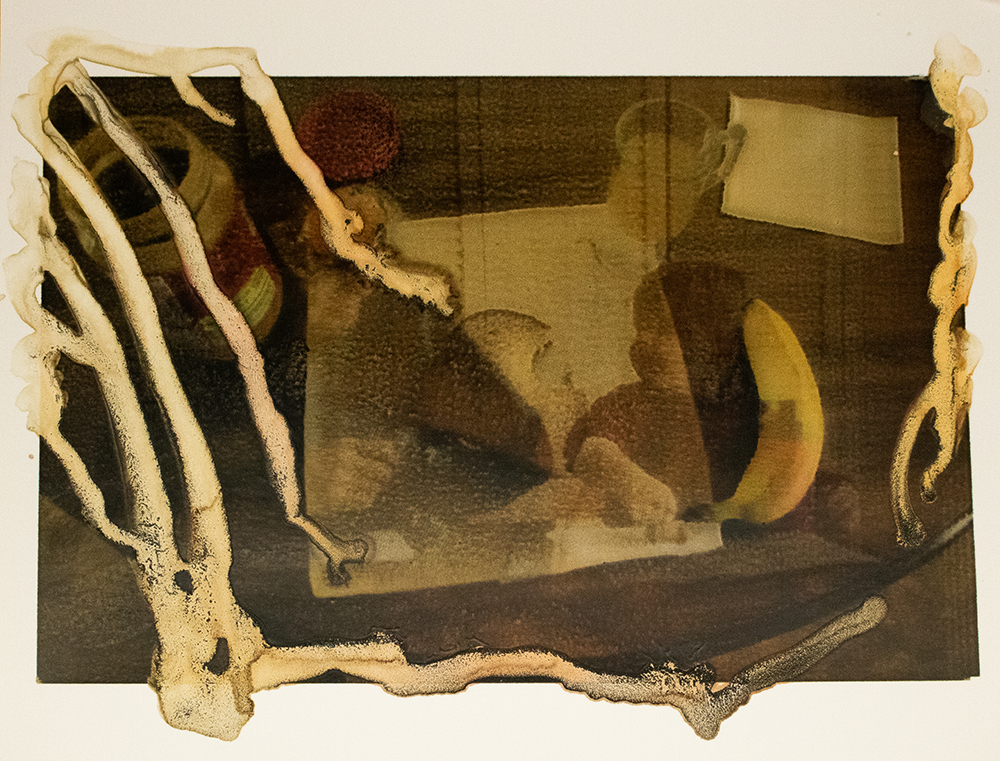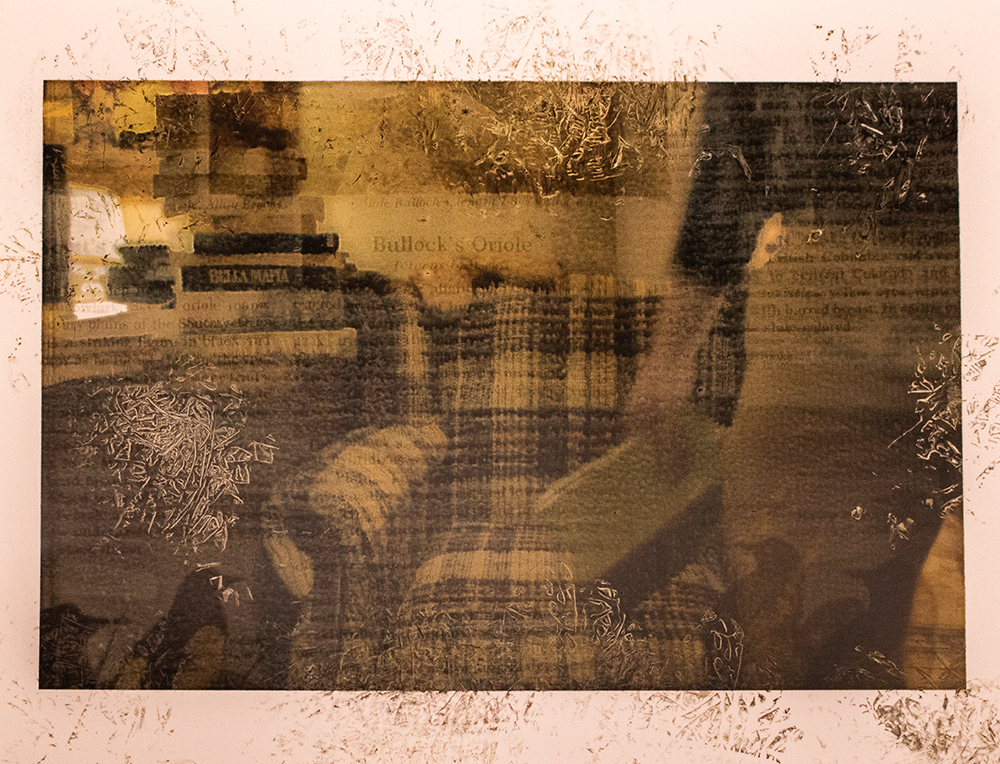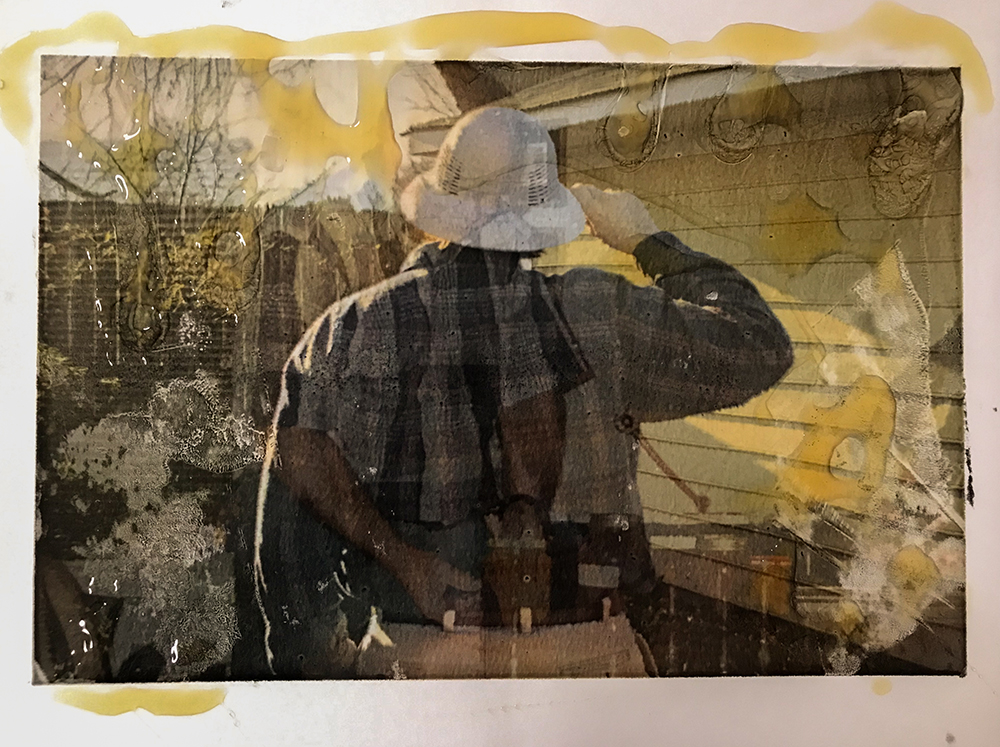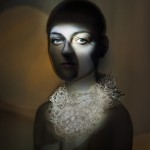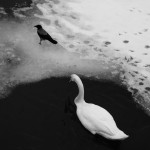Logan Gibson Davis: Clarence, Go Tell the Bees and Blueberries and Apple Trees
This week, we will be exploring projects inspired by memory, place, and/or intimacy. Today, we’ll be looking at Logan Gibson Davis’s series Clarence, Go Tell the Bees and Blueberries and Apple Trees.
Watching Logan Gibson Davis grow in his artistic career has been a treat. Logan is an alum of East Carolina University and was a Freshman when I was in my last year of my MFA. He was part of a really special class that was extremely interested in film; we used to joke that they knew more about film than the grads put together! When I first reached out, Logan reminded me that I taught him how to scan his first roll of film. These little memories are so revitalizing as an educator! Logan has a special talent for storytelling. While many of his images are personal experiences or family stories, viewers feel emotionally invested. His use of symbolism and freedom with experimentation create memorable images. I cannot wait to see what Logan does next in his emerging career.
Logan Gibson Davis is an artist currently based in Athens, Ohio. In 2023 he graduated with a BFA in photography from East Carolina University and is now a first year MFA candidate at Ohio University. His work is process heavy focusing on conceptual ideas mixed with craft. Logan is interested in using alternative processes, constructed scenes, and printmaking to create narratives and conversations about the human experience using his life as a point or relatability with the viewer.
Follow Logan on Instagram at: @logangibsondavis
Clarence, Go Tell the Bees and Blueberries and Apple Trees
The way I see art is the brain manifesting itself onto or into something and that is what I feel I am doing. I use memories of events, family, trauma, and place. I produce those memories into an image or series of images that can invoke not only my opinions and what I am feeling but pulling the viewer in as well to look at something that may make them feel vulnerable yet comfortable at the same time. My work is made for me but with the point of giving someone the comfort in which they’re not alone that whatever they are going through I hope that the viewer can grab something from my images to help them understand themselves better.
Epiphany Knedler: How did your projects come about?
Logan Gibson Davis: Blueberries & Apple Trees really came out of an accident truthfully. I printed on the wrong side of a piece of digital photo paper and the ink was all smeared and wet, but the outcome was really beautiful. The imagery was there and recognizable and I was able to manipulate the paper by folding, smearing, etc. At the time I was thinking a lot about memory and how the brain is so fragile yet complex. This is rooted in my grandpa, Clarence who passed away with Alzheimer’s. Being a close figure in my life we shared a lot of memories together and I wanted to contrast the memories we shared together with the degradation that memory has in different ways such as aging and cognitive disease. I felt like the process I accidentally discovered was perfect for depicting hazy memories and distorting by hand with objects that are very sensory such as blueberries or honey that correlate with each shared moment between me and my grandpa.
For Clarence, Go Tell The Bees, I was struggling with an overwhelming fear of death. After leaving religion I was immediately left with the question of “Where do I go when I die?” which is easily solved by a comforting idea when you’re a part of a faith. I was researching meaning and symbology with bees within death as just a curiosity when I found the folklore of “telling the bees”. This is an old tradition in which if a beekeeper dies someone has to inform their bees so they do not get sick, stop producing honey, or even die. You have to whisper a poem to the hive and then cover it in a black cloth and let the bees grieve. In a way they act as a guide to the afterlife for the beekeepers as well. Once again my grandpa was a big influence in this project since he was a beekeeper. I watched him pass away and it was the first time as a child I really understood death. I took this folklore and ran with it to create my own comfort for when the inevitable is to come. I have never liked the idea of a typical burial, in an ideal world I would love to be buried in an organic way giving back to nature. I now had this idea of a beekeeper, my own comforting grim reaper. The beekeeper had this idea that when I die I will be given to the environment and then I will be a part of helping the environment. A beekeeper in the afterlife giving death more of a meaningful purpose.
EK: What relationship does intimacy and/or memory play within your practice?
LGD: I think my whole workflow is based on memory. All of my projects have something to do with looking into myself and back in the past to find something that I need to look at a little harder. Memory is the basis for all of our experiences, good and bad and being able to look at those and communicate to yourself and an audience that whatever you’re going through, someone else is most definitely going through a similar situation. Not only does this conjure up projects it influences craft in many different ways. Blueberries & Appletrees was fully based off of that accidental process. I have used gum bichromate printing in the past to give a similar effect to trying to make the feeling and the visuals that I have experienced in my own imagination. My brain is very near and dear to me and I constantly worry about losing my memory but as a photographer I have the opportunity to solidify them forever which brings me a lot of comfort.
EK: Is there a specific image that is your favorite or particularly meaningful to these series?
LGD: The title piece for Blueberries & Apple Trees is definitely a hard hitting image for me. While I was making the image my mom and grandma were present and the entire time I was making the image. I was recreating a memory we all held so dear which was picking blueberries off the giant bush that was up against the fence in their backyard. We would put them in these old barbeque containers we would save from when we had it for dinner which we found and I used it in making the photograph. I was dressed like he would for the photos, my mom and grandma kept talking about how much I looked like my grandpa which made me feel even more connected to him when recreating this memory. Then when manipulating the ink and placing the blueberries on the paper my memory really manifested itself onto this print. It was exactly how my brain visualizes that memory.
EK: Can you tell us about your artistic practice?
LGD: My ideas come from play and experience with process. A lot of the time I am working on something fun, placing things and creating props and photographing myself with them. A lot of the time the play images are bad but I for the most part create ideas and series based on one image that was never intended to be serious because it will remind me of something from my childhood or a small moment that impacted me in a very specific way. That goes for using processes as well. It’s a lot of making things that have no meaning but an accidental brushstroke or a very intentionally frustrated one could spring an Idea into a series. Once the initial play is over I make and come up with corresponding images and refine, refine, refine. Never does one of my photographs turn out the first time. It is a constant obsession with trying to make it work. I am very stubborn in that way, if there is an idea I have to fulfill what I have thought about or I will struggle to find new ideas.
EK: What’s next for you?
LGD: Currently I am enrolled in the MFA program at Ohio University in Athens as a first year in photography. I am incredibly excited to take this next step to further my toolbelt as a maker. My goal is to really experiment with process, dipping into printmaking and maybe a little bit of sculptural installation work. I enjoy alternative processes and they have a strong relationship with printmaking so combining those processes into conceptual and meaningful series and pieces is something that I am looking forward to very much. I have ample opportunity to further my abilities in the near future and I am going to do everything in my power to take in as much information as possible.
Epiphany Knedler is an interdisciplinary artist + educator exploring the ways we engage with history. She graduated from the University of South Dakota with a BFA in Studio Art and a BA in Political Science and completed her MFA in Studio Art at East Carolina University. She is based in Aberdeen, South Dakota, serving as a Lecturer of Art and the co-curator for the art collective Midwest Nice Art. Her work has been exhibited in the New York Times, Vermont Center for Photography, Lenscratch, Dek Unu Arts, and awarded through the Lucie Foundation, F-Stop Magazine, and Photolucida Critical Mass.
Follow Epiphany on Instagram: @epiphanysk
Posts on Lenscratch may not be reproduced without the permission of the Lenscratch staff and the photographer.
Recommended
-
Ragne Kristine Sigmond: Portraits of Painterly LightDecember 2nd, 2025
-
Mary Pat Reeve: Illuminating the NightDecember 1st, 2025
-
Ricardo Miguel Hernández: When the memory turns to dust and Beyond PainNovember 28th, 2025
-
Pamela Landau Connolly: Columbus DriveNovember 26th, 2025
-
MATERNAL LEGACIES: OUR MOTHERS OURSELVES EXHIBITIONNovember 20th, 2025

